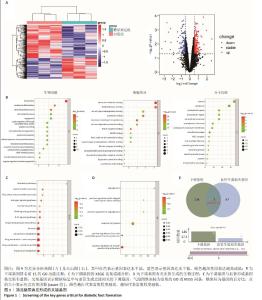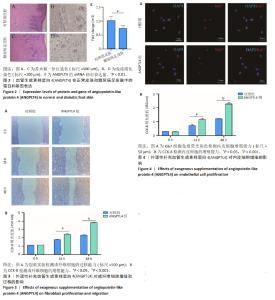[1] 中华医学会糖尿病分会. 中国2型糖尿病防治指南(2020年版)[J]. 中华内分泌代谢杂志,2021,37(4):311-398.
[2] 中国老年2型糖尿病防治临床指南编写组, 中国老年医学学会老年内分泌代谢分会, 中国老年保健医学研究会老年内分泌与代谢分会, 等. 中国老年2型糖尿病防治临床指南(2022年版)[J] .中华内科杂志,2022,61(1):12-50.
[3] ARMSTRONG DG, TAN TW, BOULTON AJM, et al.Diabetic Foot Ulcers: A Review. JAMA. 2023;330(1):62-75.
[4] REARDON R, SIMRING D, KIM B, et al.The diabetic foot ulcer.Aust J Gen Pract. 2020;49(5):250-255.
[5] MI F, LIU Z, WANG X, et al.Deep Red Light Driven Hydrogen Evolution by Heterojunction Polymer Dots for Diabetic Wound Healing.Angewandte Chemie.Angew Chem Int Ed Engl. 2024;6: e202402133.
[6] ALKHAMI F, RUBIN S, BORDERIE G, et al.Increased risk of renal events in people with diabetic foot disease: A longitudinal observational study.Diabetes Metab. 2024;50(4):101536.
[7] VAN NETTEN JJ, AAN DE STEGGE WB, DIJKGRAAF MGW, et al.Cost-effectiveness of temperature monitoring to help prevent foot ulcer recurrence in people with diabetes: A multicenter randomized controlled trial. Diabetes Metab Res Rev. 2024;40(4):e3805.
[8] BAKADIA BM, ZHENG R, QAED AHMED AA, et al.Teicoplanin-Decorated Reduced Graphene Oxide Incorporated Silk Protein Hybrid Hydrogel for Accelerating Infectious Diabetic Wound Healing and Preventing Diabetic Foot Osteomyelitis. Adv Healthc Mater. 2024;24:e2304572.
[9] VAN NETTEN JJ, APELQVIST J, BUS SA, et al.The unique multidisciplinarity of diabetes-related foot disease. Diabetes Metab Res Rev. 2024;40(4):e3804.
[10] OROPALLO AR, SERENA TE, ARMSTRONG DG, et al. Molecular Biomarkers of Oxygen Therapy in Patients with Diabetic Foot Ulcers. Biomolecules. 2021;11(7):925.
[11] MACDONALD KE, STACEY HJ, HARKIN G, et al.Patient perceptions of phage therapy for diabetic foot infection. PLoS One. 2020;15(12): e0243947.
[12] FRYKBERG RG.Topical Wound Oxygen Therapy in the Treatment of Chronic Diabetic Foot Ulcers. Medicina (Kaunas). 2021;57(9):917.
[13] SHARMA R, SHARMA SK, MUDGAL SK, et al.Efficacy of hyperbaric oxygen therapy for diabetic foot ulcer, a systematic review and meta-analysis of controlled clinical trials. Sci Rep. 2021;11(1):2189.
[14] NALISA DL, MONERUZZAMAN M, CHANGWE GJ, et al.Stem Cell Therapy for Diabetic Foot Ulcers: Theory and Practice. J Diabetes Res. 2022;2022:6028743.
[15] YANG J, CHEN Z, PAN D, et al. Umbilical Cord-Derived Mesenchymal Stem Cell-Derived Exosomes Combined Pluronic F127 Hydrogel Promote Chronic Diabetic Wound Healing and Complete Skin Regeneration. Int J Nanomedicine. 2020;15:5911-5926.
[16] YU Q, QIAO GH, WANG M, et al. Stem Cell-Based Therapy for Diabetic Foot Ulcers.Front Cell Dev Biol. 2022;10:812262.
[17] YU X, LIU P, LI Z, et al. Function and mechanism of mesenchymal stem cells in the healing of diabetic foot wounds. Front Endocrinol (Lausanne). 2023;14:1099310.
[18] ZHANG J, LIU H, YU Q, et al.Hair Derived Microneedle Patches for Both Diabetic Foot Ulcer Prevention and Healing. ACS Biomater Sci Eng. 2023;9(1):363-374.
[19] SUH HP, KEDAR DJ, LEE YH, et al.Use of Recanalized Vessels for Diabetic Foot Reconstruction: Pushing the Boundaries of Reconstruction in a Vasculopathic Lower Extremity. Plast Reconstr Surg. 2023;151(3):485e-494e.
[20] RAI V, MOELLMER R, AGRAWAL DK.Stem Cells and Angiogenesis: Implications and Limitations in Enhancing Chronic Diabetic Foot Ulcer Healing. Cells. 2022;11(15):2287.
[21] MASTROGIACOMO M, NARDINI M, COLLINA MC, et al. Odorisio, Innovative Cell and Platelet Rich Plasma Therapies for Diabetic Foot Ulcer Treatment:The Allogeneic Approach.Front Bioeng Biotechnol. 2022;10:869408.
[22] WANG X, DAI S, ZHENG W, et al.Identification and verification of ferroptosis-related genes in diabetic foot using bioinformatics analysis.Int Wound J. 2023;20(8):3191-3203.
[23] ARYAL B, PRICE NL, SUAREZ Y, et al.ANGPTL4 in Metabolic and Cardiovascular Disease. Trends Mol Med. 2019;25(8):723-734.
[24] PLOUG M.ANGPTL4: a new mode in the regulation of intravascular lipolysis. Curr Opin Lipidol. 2022;33(2):112-119.
[25] ZUO Y, DAI L, LI L, et al. ANGPTL4 Regulates Psoriasis via Modulating Hyperproliferation and Inflammation of Keratinocytes. Front Pharmacol. 2022;13:850967.
[26] QIN Y, DINABANDHU A, CAO X, et al.ANGPTL4 influences the therapeutic response of patients with neovascular age-related macular degeneration by promoting choroidal neovascularization. JCI Insight. 2022;7(13):e157896.
[27] CHO DI, AHN MJ, CHO HH, et al.ANGPTL4 stabilizes atherosclerotic plaques and modulates the phenotypic transition of vascular smooth muscle cells through KLF4 downregulation. Exp Mol Med. 2023; 55(2):426-442.
[28] FERNÁNDEZ-HERNANDO C, SUÁREZ Y. ANGPTL4: a multifunctional protein involved in metabolism and vascular homeostasis. Curr Opin Hematol. 2020;27(3):206-213.
[29] ZUO Y, HE Z, CHEN Y, et al.Dual role of ANGPTL4 in inflammation. Inflamm Res. 2023;72(6):1303-1313.
[30] SINGH AK, CHAUBE B, ZHANG X, et al. Fernandez-Hernando, Hepatocyte-specific suppression of ANGPTL4 improves obesity-associated diabetes and mitigates atherosclerosis in mice. J Clin Invest. 2021;131(17):e140989.
[31] HE J, ZHOU S, WANG J, et al.Anti-inflammatory and anti-oxidative electrospun nanofiber membrane promotes diabetic wound healing via macrophage modulation. J Nanobiotechnology. 2024;22(1):116.
[32] LIN Y, ZHANG Y, CAI X, et al.Design and Self-Assembly of Peptide-Copolymer Conjugates into Nanoparticle Hydrogel for Wound Healing in Diabetes.Int J Nanomedicine. 2024;19:2487-2506.
[33] PRASATHKUMAR M, GEORGE A, SADHASIVAM S.Influence of chitosan and hydroxyethyl cellulose modifications towards the design of cross-linked double networks hydrogel for diabetic wound healing. Int J Biol Macromol. 2024;265(Pt 1):130851. |



